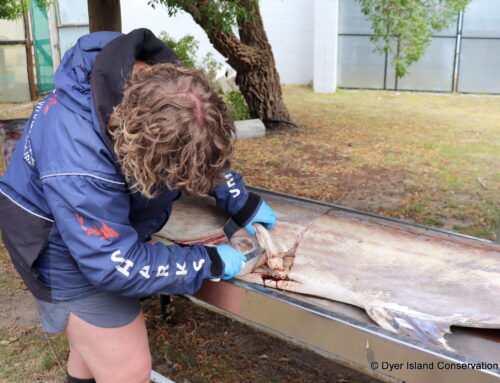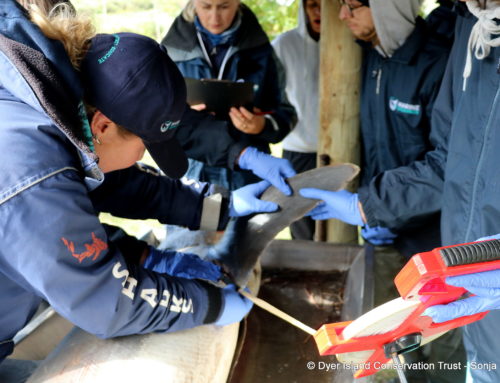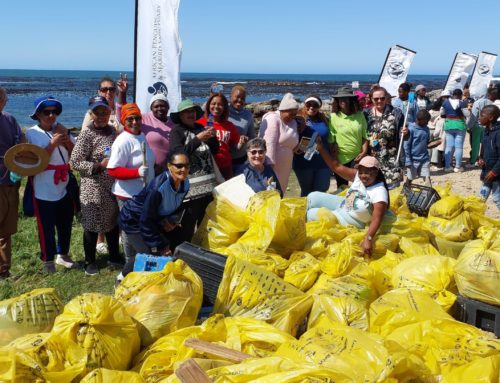Acoustic tagged shark number 10
October 09, 2012 by dyertrust

So far, we have successfully clocked over 20 hours on Anarchy. At first she would visit one or two cage diving boats then home back to the inshore and outer reefs of Joubertsdam. On Sunday 23rd we had truly rare beautiful windless conditions in the bay, allowing us the perfect tracking run. It was this day we managed to get 9 hours on our shark. Amusingly she moved so close inshore- I commented to my volunteers and interns that we would be better of standing on the beach with our hydrophone in the breakers! Presumably she was patrolling very shallow reefs for fish based prey or lapping up the higher oxygen content of the backline (requiring less swimming effort overall). She ignored all cage diving boats which were chumming in the area close by her reefs, pleasing to see. Finally at 4.30pm in the afternoon she circled one cage diving boat and moved back to the outer reefs.
It is important we continue to collect this fine scale movement data on white sharks, particularly in the Gansbaai region. We are starting to learn these sharks act independently when visiting regions, which is influenced by their life history stage/ size and time of year/conditions. Just as we human beings eat differently as children and teenagers to when we are adults, so does this species of shark. Juvenile white sharks also seem to cover larger areas known as their home ranges compared to their more experienced competing adults, who have refined their hunting strategies to much smaller more prime areas. We now know that these predators despite their size adapt their hunting strategies and swimming patterns to the topography they are faced with when visiting coastal bay systems and seal colonies.
Satellite tagged sharks some females are movingfar and often!
The latest data from our satellite tagged white sharks can be viewed daily on Ocearch application global tracker
Again, thanks for all the continued support, we look forward to posting the next sharky update very soon!





